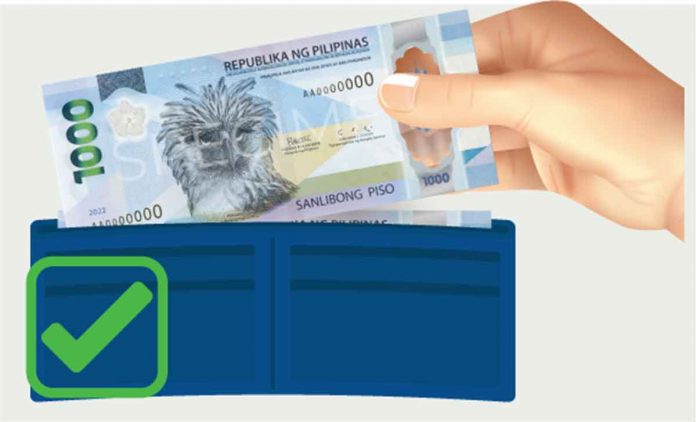
ILOILO City – Folded or creased P1,000 polymer banknotes are acceptable and can be used for day-to-day payment transactions, according to the Bangko Sentral ng Pilipinas (BSP).
It issued this clarification to address concerns raised on social media regarding non-acceptance by some establishments of folded P1,000 polymer bills.
“Retailers and banks should accept them,” BSP said.
However, according to BSP-Visayas Regional Office acting bank officer Dr. Gregorio Baccay III, retailers that were paid with creased or unfit P1,000 polymer banknotes should not recirculate them.
Gather these unfit bank notes and had them changed with new ones in banks or at the BSP itself, said Baccay.
Still, stressed Baccay, people should know how to care for polymer banknotes and, as much as possible, refrain from creasing or folding them.
How?
Keep them flat. Place polymer banknotes in wallets where they fit properly. If banknotes become crumpled or creased, apply pressure or flatten them with your hands.
Keep them clean. Soiled or dirty polymer banknotes may be wiped clean with a damp cloth. Their surface may also be cleaned with alcohol-based sanitizers, just wiped them dry right away using a towel or piece of cloth.
Do not deface, write on, or mark the banknotes.

Do not excessively fold, crease, or crumple polymer banknotes. These could leave permanent fold marks.
Do not tear, cut, or poke holes in polymer banknotes.
Do not staple polymer banknotes or use rubber bands to keep them together. You may use paper bands instead.
Do not damage the clear windows, metallic features, and other security features of the banknotes.
Do not expose polymer banknotes to very high temperature or place them near an open flame.
Do not iron them.
Do not expose the polymer banknotes to string or toxic chemicals, such as muriatic acid or bleach.
“Kapag ang tao marunong mag-alaga ng pera, it will be a high savings sa BSP dahil ma-decrease ang cost of printing. Marami ang BSP na mabibigay sa government na puwedeng magamit sa mga projects. It is the public that will benefit for taking good care of our money,” said Baccay.
He suggested that people use long wallets.
As of now, Baccay said, P1,000 polymer banknotes are not yet circulating in Region 6.
Circulation stated in the National Capital Region (NCR) on April 2022; some 10 million pieces were released.
The circulation will be nationwide by October 2022; some 500 million pieces will be released./PN



